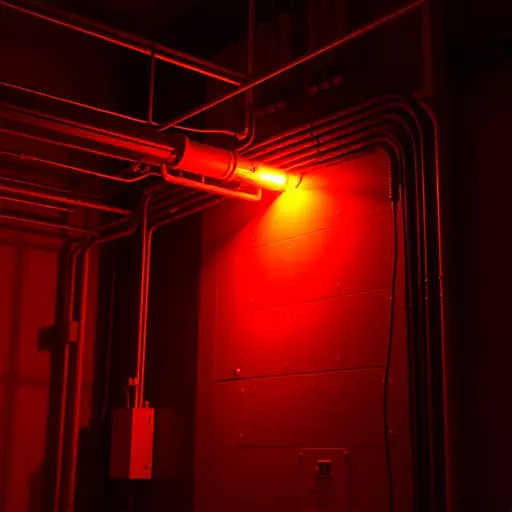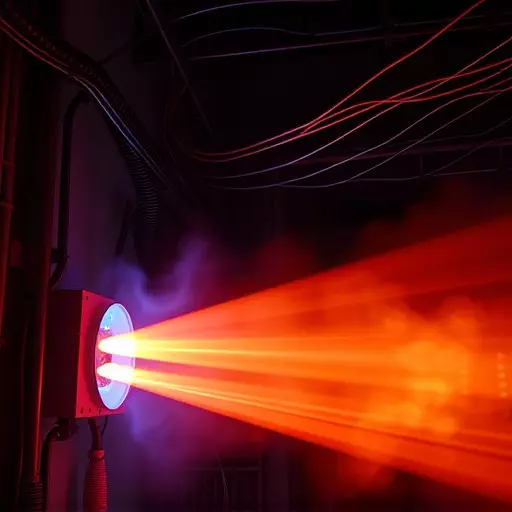Arc flash incidents, often misunderstood as solely equipment failures, are frequently triggered by human error or electrical faults. To prevent these potent energy releases, a comprehensive arc flash study process is essential. This involves electrical hazard analysis to identify ignition sources, assess risks, and implement arc flash safety standards, thereby safeguarding personnel and equipment in the workplace. Adhering to guidelines like NFPA 70E significantly reduces risks.
“Unraveling Arc Flash Misconceptions: A Comprehensive Guide
This article aims to dispel common myths surrounding arc flash, a serious electrical hazard. Many believe arc flashes occur solely during equipment failure, but this is not always the case. We explore diverse scenarios triggering these events. The focus shifts to the critical ‘Arc Flash Study Process’, a systematic approach to risk assessment, challenging perceptions of its complexity.
Furthermore, we delve into the integration of electrical hazard analysis and safety standards like NFPA 70E, emphasizing their role in preventing arc flash incidents.”
- Misconception: Arc Flash Only Occurs During Equipment Failure
- – Definition of arc flash and its causes beyond equipment failure
- – Examples of arc flash events not linked to hardware malfunction
Misconception: Arc Flash Only Occurs During Equipment Failure
One prevalent misconception about arc flash is that it only occurs during equipment failure. However, this isn’t entirely accurate. While equipment malfunction can indeed lead to an arc flash, it’s not the sole trigger. Any sudden electrical fault or irregularity in a circuit can potentially create the conditions for an arc flash. These events can range from power surges and short circuits to miswired connections or human error during maintenance.
Understanding that arc flash is not exclusively tied to equipment failure underscores the importance of a thorough arc flash study process. This involves a detailed electrical hazard analysis to identify potential sources of ignition, assess risks, and implement appropriate arc flash safety standards. By proactively addressing these factors, workplaces can significantly reduce the likelihood and severity of arc flash incidents.
– Definition of arc flash and its causes beyond equipment failure
Arc flash is a sudden release of electrical energy in the form of a powerful arc between conductors or within an insulation system. This phenomenon occurs when there’s a breakdown of electrical insulation, often due to factors beyond equipment failure. Factors like human error, improper installation, or accidental damage can trigger an arc flash. The resulting high-temperature plasma blast and pressure wave pose significant risks to personnel and equipment in the immediate area.
Understanding arc flash involves a comprehensive study process that includes thorough electrical hazard analysis. This process identifies potential arc flash points, assesses associated risks, and helps develop appropriate safety measures aligned with established arc flash safety standards. By integrating these standards into workplace practices, organizations can mitigate risks, ensure worker safety, and maintain a secure operational environment.
– Examples of arc flash events not linked to hardware malfunction
Arc flash events can occur in various scenarios, often misunderstood as solely resulting from hardware malfunction. In reality, many instances involve human error or procedural oversights rather than equipment failures. For instance, a technician performing maintenance on an electrical system might inadvertently touch a live wire, creating an arc flash. Similarly, misclassification of equipment ratings or failure to follow proper sequence of operations can trigger these events.
A thorough understanding of the arc flash study process is crucial. This involves a meticulous Electrical Hazard Analysis (EHA) that considers all aspects of an electrical system, including human factors and work practices. By adhering to established arc flash safety standards, such as those outlined in NFPA 70E, facilities can significantly reduce risks associated with arc flashes, ensuring the safety of workers and compliance with relevant regulations.


